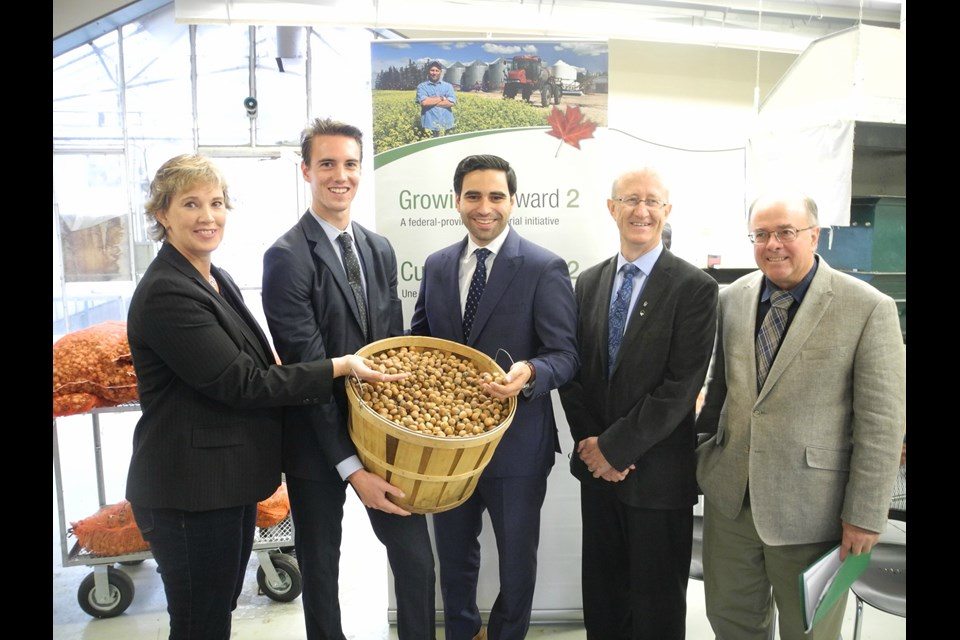
The supercluster effect is one of the intriguing outcomes of dangling dollars in front of sectors hungry for innovation investment.
Nine groups await word from the federal government on which gets to tap the $950-million supercluster innovation coffer. Ottawa established the fund last year to help reshape the Canadian economy and set it up for future success by stimulating collaborative innovation.
The nine represent key sectors of the Canadian economy. They were shortlisted from among more than 100 that submitted indications of interest.
The supercluster process is by its nature competitive. So it’s been interesting to watch how the various groups have attempted to convince the powers-that-be (politicians and bureaucrats, for the most part, and their respective sectors) that their proposals should rise to the top. The outreach efforts offer insights into some of the inner workings of each group.
All have compelling (and exciting) stories to tell. Whichever of the nine are successful, the projects they propose will almost certainly have a positive and profound impact on the overall economy – and will help the public understand the importance of long-term innovation investment.
The supercluster effect has also generated significant collaborative excitement and enthusiasm between companies, governments, post-secondary institutions and organizations that in the normal course of events would have no compelling reason to interact with each other consistently (even though perhaps they should).
The word supercluster paired with the word innovation can connote something that vaguely smells of bureaucracy and binary code. But the process has, in fact, uncovered a strong sense of the entrepreneurial spirit (industry must match dollar for dollar federal funding) and a whole range of ideas (digital and otherwise) that could have remained stillborn concepts.
These real-life initiatives are ready for deployment in Canada’s fields, classrooms, offices and labs.
One of the nine is the Smart Agri-Food Supercluster (SASC). It’s a massive consortium of diverse players that touch all parts of the Canadian agri-food value chain – from farm-to-fork. In other words, from the way we grow and raise food to the way we – and others – consume it. It’s a chain that touches everything from job creation and environmental sustainability to technology innovation and economic growth. That includes solidifying Canada’s place as a global agri-food leader.
SASC is the supercluster effect writ large – in that superclusters are intended to encourage collaboration and knock down barriers.
If there ever was a sector for which the term ‘working in silos’ was created, it’s agri-food. Primary producers don’t, for example, have the clearest line-of-sight to consumers. Important data gets trapped within silos. Research isn’t consistently shared. And Canada’s original innovation ecosystem engine – the farm – needs some help to keep it revving.
SASC is structured to ensure that silos all connect – and that the pan-Canadian platform can expand to accommodate growth and new participants. That model attracted nearly 100 companies and organizations, with more seeking to join daily.
SASC has convened some intriguing idea generation between its diverse members that also illuminates and illustrates the supercluster effect.
Agri-businesses and farmers have been brainstorming with technology companies. Food processors have been blue-skying with environmental firms. Colleges and universities are connecting and collaborating to hyper-charge research. There are fascinating discussions about digital farming and agri-food blockchain applications.
Read also:
How blockchain can revolutionize the foodchain by Sylvain Charlebois
The list goes on.
Two acronyms have also come together to link two of Canada’s key resource sectors in a powerful partnership: SASC and CRIN.
CRIN is the Clean Resource Innovation Network, an intriguing web of oil and gas companies and organizations melded to focus on clean technology development. CRIN rep Joy Romero of Canadian Natural Resources, an upstream oil and gas company, sits on the SASC board. That means oil and gas companies and researchers will work with farmers, ranchers and agri-business companies to tackle carbon emissions and water quality challenges.
The supercluster effect has been energizing and illuminating. It’s revealed the untapped power and potential of collaboration between diverse groups that needed an external catalyst to convene. It’s also teased out how important creative investment in innovation will be to the Canadian economy of the future.
Now it’s up to Ottawa to hitch up groups like the Smart Agri-Food proponents and let them get to work.
Bill Whitelaw is president and CEO at JuneWarren-Nickle’s Energy Group. He is also a member of the Smart Agri-Food Supercluster transition board and chaired its preliminary steering committee. He is executive vice-president of Weather Innovations.
The views, opinions and positions expressed by columnists and contributors are the author’s alone. They do not inherently or expressly reflect the views, opinions and/or positions of our publication.

